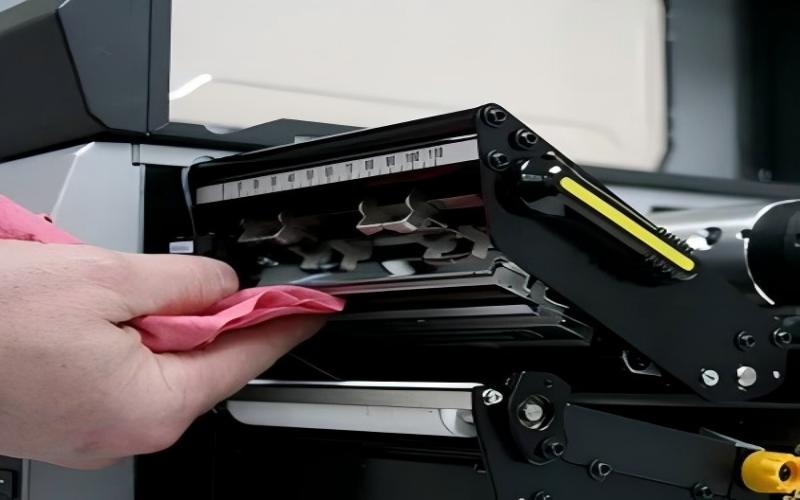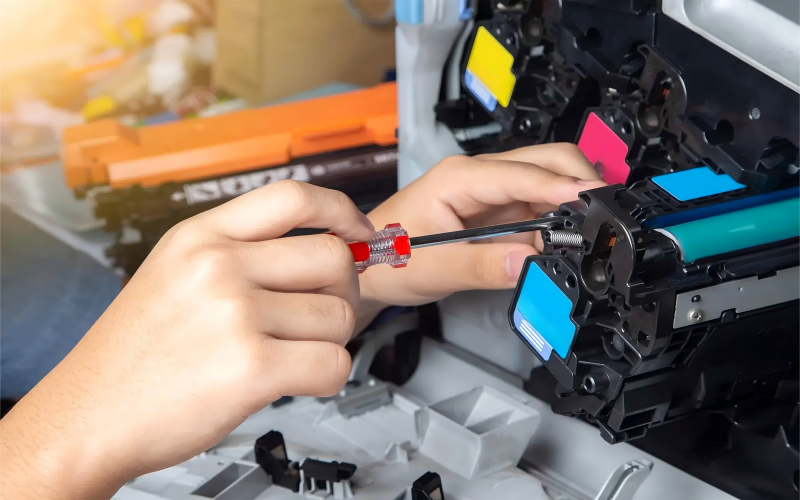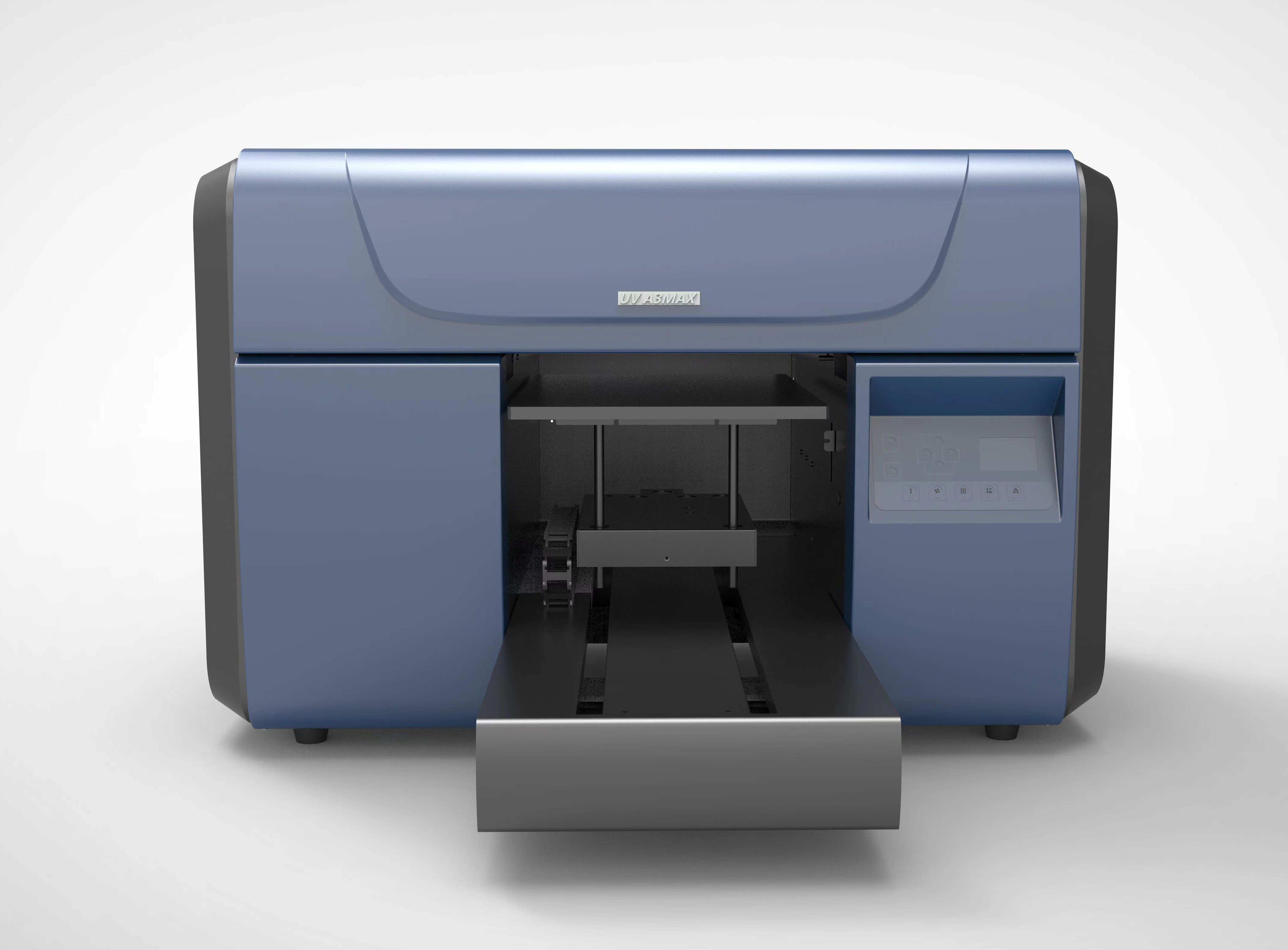Industrial Printer Maintenance Guide: Keep Your Equipment Running Smoothly
Why Is Maintenance Important for Industrial Printers?
Ignoring maintenance might result in: More downtime - Production is disrupted by frequent breakdowns.Increased repair expenses: Minor problems can become costly ones.
Low print quality: Output is impacted by worn parts or clogged printheads.
Reduced lifespan: Your printer's operating life is shortened by neglect.
Consistent print quality, a longer equipment lifespan, lower operating costs, and fewer unplanned failures are all guaranteed by routine maintenance.
Checklist for Daily Maintenance
1. Clean the PrintheadDebris, dust, and ink accumulation can block the printer, resulting in misprints or streaks.
Use the cleaning products that the manufacturer recommends.
Use a lint-free cloth to gently wipe the printhead.
Avoid touching the nozzles directly to prevent damage.
2. Verify the Ink Levels
Printhead damage may result from running out of ink in the middle of a job.
Check the ink levels every day.
Before the cartridges run out, replace them.
To prevent clogging, use suitable, high-quality inks.
3. Examine the Media Route
The rollers and sensors are susceptible to dust and particle buildup.
Clean the rollers with a moist cloth.
Eliminate any remaining paper or label.
For precise media detection, make sure the sensors are clean.
4. Check the Quality of the Print
A test page should be printed to look for:
Absence of lines or streaks
Uneven or faded hues
Barcodes or text that is not aligned
If problems arise, inspect the nozzle or do a deeper cleaning.
Weekly Upkeep Assignments
1. Give the printer a thorough cleaningLong-term accumulation can be avoided with more thorough cleaning.
Eliminate extra ink from internal parts.
The platen—the surface on which printing takes place—should be cleaned.
Look for misplaced pieces or loose screws.
2. Oil Moving Components
Belts, tracks, and gears in industrial printers require lubrication.
Use lubricants recommended by the manufacturer.
Use sparingly to prevent dust attraction.
3. Update the software and firmware
Performance problems may arise from outdated software.
See if the manufacturer has any updates.
Install the most recent firmware fixes and drivers.
4. Examine the connections and cables
Mistakes may be caused by loose or broken cables.
Make sure every link is safe.
Replace any worn-out or frayed cables.

Both Long-Term and Monthly Maintenance
1. Change out worn-out componentsOver time, some parts deteriorate, such as:
Printheads (if quality is restored after cleaning)
Belts and rollers (if they exhibit cracks or lose their grip)
Fans and filters (to avoid overheating)
2. Adjust the printer's calibration
Print accuracy may suffer from alignment drift over time.
Conduct tests for calibration.
As necessary, change the settings.
3. Examine the surroundings
Under ideal circumstances, industrial printers operate at their best:
Maintain a temperature range of 15°C to 30°C (59°F to 86°F).
Keep the humidity between 40% and 60% to avoid moisture or static damage.
Dust Control: To prevent blockage, keep the area tidy.
4. Arrange for Expert Maintenance
An annual inspection by a qualified specialist guarantees that internal components are in good condition even with routine maintenance.
Hidden problems are found early.
conformity with warranties (where applicable).
Solving Typical Industrial Printer Problems
Industrial printers can occasionally have issues, even with regular maintenance. The following list of typical problems, their potential causes, and fixes will help you get them resolved as soon as possible:1. Faded or shaky prints
Possible causes include low ink levels, a clogged printhead, or improper print settings.
Solution: Use the cleaning solution suggested by the manufacturer to clean the printhead.
If necessary, replace the cartridges and check the ink levels.
Do a printhead alignment and a nozzle check.
2. Incorrect media settings, misaligned sensors, or dirty rollers could be the cause of the printer not feeding media correctly.
Solution: Use a lint-free cloth to clean the media path and rollers.
Verify the alignment of the sensor and recalibrate if required.
Make sure the thickness and media type settings are set correctly.
3. Poor drying or smudging of the ink
High humidity, incorrect medium type, or rapid print speeds are all potential causes.
Answer:
For improved ink absorption, use material that has been approved by the manufacturer.
Lower the print speed or change the drying parameters.
Keep the humidity between 40 and 60 percent.
4. Regular Paper Jams
Possible causes include debris in the feed channel, misplaced media, or worn-out rollers.
Solution: If damaged rollers lose their ability to grip, replace them.
Make sure the media is loaded without wrinkles and in a straight line.
Clear the paper route of any obstacles.
5. Printer Not Responding or Error Messages
Potential Cause: Firmware problems, loose wires, or software bugs.
Restarting the printer and any related systems is the solution.
Verify that none of the connectors or wires are damaged.
Update the drivers and firmware on the printer.
6. Printing that is uneven or misaligned
Possible causes include worn-out components, a loose printhead, or improper calibration.
Answer:
Recalibrate and secure the printhead.
Do an alignment test by hand.
Look for worn-out gears or belts that might require replacement.
7. Unexpected shutdowns or overheating
Possible causes include overuse, a malfunctioning cooling fan, or blocked ventilation.
Solution: Clear the cooling fans and vents of dust.
In between lengthy print sessions, let the printer cool down.
If the fan isn't working properly, replace it.
8. Inadequate Label or Barcode Readability
Possible causes include a filthy printhead, low resolution settings, or the wrong print mode.
Solution: Sharper barcodes can be achieved by increasing print resolution.
Select the appropriate print mode (direct thermal vs. thermal transfer).
Test the print quality after cleaning the printhead.

Do You Need Dependable Assistance for Industrial Printers?
If your company relies on industrial printing, investing in appropriate maintenance will save time and money. We provide top-notch solutions to keep your printers operating properly, whether you need expert guidance, high-quality replacement components, or professional servicing.Browse our industrial printer supplies or schedule a consultation with us right now!
RECENT POSTS
-
Open spray machine: the perfect supporting equipment to improve the efficiency of DTG industrial printers
-
The Perfect Partner To Improve DTG Printing Efficiency--Enclosed Spray Machine
-
Industrial Printer Maintenance Guide: Keep Your Equipment Running Smoothly
-
Which Printing Type is the Most Cost-Effective for Large Print Jobs?
-
What Is The Difference Between Wide Format And Large Format?
Application
-
 Hstar printer in Turkey ExhibitionIn September, our company participated in the Turkish advertising exhibition. At the exhibition, many people are interested in our machine.
Hstar printer in Turkey ExhibitionIn September, our company participated in the Turkish advertising exhibition. At the exhibition, many people are interested in our machine. -
 Vango DTF printerOur DTF printer adopts an all-in-one printing design, which is more space-saving and easier to operate.This is our printing show.
Vango DTF printerOur DTF printer adopts an all-in-one printing design, which is more space-saving and easier to operate.This is our printing show.
Wide applications,design for textile printing,Suitable for all kinds of fabrics, T-shirts,leather, bags and shoes etc.
More Application












